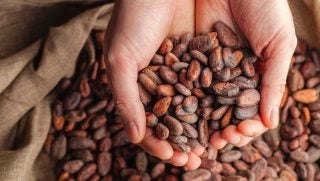For the people who started showing their beloved dairy cows at a young age like I did, perhaps you remember looking at a registration paper for the first time too. I remember getting my first Jersey calf, Daffodil, and having to try to decipher the registration papers.
If you haven’t ever seen a registration paper before, it’s a piece of paper with a tiny typewriter print. It has a couple of brackets on it, and lots and lots of numbers and abbreviations that make no sense to a newbie.
Somewhere on the registration paper you will find the breed, name, family tree, and even more about your animal, but where to find it is the question.
So if you enjoy going to consignment sales, are in the market for a new show heifer, or just want to learn more, here is your easy-to-understand guide to reading a pedigree!
For starters, the registration paper should tell you which association the animal is registered through at the top. If you have a Holstein, the top of the registration paper will read “Official Holstein Registry,” and if you have a Jersey it will say “American Jersey Cattle Association.”
No matter which of the seven recognized dairy cattle breeds you have, along the top of the registration paper the association your animal belongs to will have their official seal.
Each breed association’s registration papers look a little different, but they have a similar structure. Right under the official breed association seal you’ll find the name, birthdate, the registration number, sex, service (artificial insemination, embryo transfer, etc.), birth type (single or twin), color, and tattoos of your animal. You should also find the owner of the animal, and the one who bred the animal’s mother when she got pregnant.
In this same area you might find some sort of a TPI (total performing index) or PTA (predicted transmitting ability) number. It could be listed as a TPI, PTPI (pedigree TPI), GTPI (genomic TPI), a CTPI (cow TPI), or a GPTA (genomic PTA). Your animal’s TPI number takes into account the predicted transmitting ability your animal has for milk protein, milk fat, somatic cell count, and other physical characteristics and traits that make cows productive and live long lives. If you want to learn more about what the TPI numbers tell you, the American Holstein Association has a great resource for that!
Underneath the animal’s own name and other information, you will find their family information. Starting on the left you will see a bracket that has an animal name, registration number, and possibly a birthdate and various TPI information. The animal listed on the top bar of the bracket is the sire (father) of your animal, and the animal listed on the bottom bar of the bracket is your animal’s dam (mother).
Moving to the right of the sire and dam information you will see a bracket off of the sire detailing his sire and dam information, and you will see a bracket off of the dam detailing her sire and dam information. You will always find the sire on the top bracket and dam on the bottom one.
Finally if you’re wondering why your animal’s name looks so long and complicated, it’s because their registered name is not just the name you give them. So when you named your cow Crimson but you see PBJ Integral Crimson as her name, that means your cow Crimson belonged to PBJ dairy when she was born, her sire is named Integral, and her name is Crimson. This is so that we do not end up with multiple cows of the same breed with the same name.
It is important to be able to read your animal’s registration papers, but it’s also important to know what information goes on them so that if you have to register your animal, you know exactly what information you will have to look up.
Dairy cattle registration papers look confusing, and sometimes have a lot of numbers on them, but they aren’t so hard to understand once you know what information goes where. If you can read a registration paper, you are well on your way to getting a blue ribbon in showmanship, or purchasing a great new member of the herd!
Elizabeth Maslyn is a born and raised dairy farmer from Upstate New York. Her passion for agriculture has driven her to share the stories of farmers with all consumers, and promote agriculture in everything she does. She works hard to increase food literacy in her community, and wants to share the stories of her local farmers.



